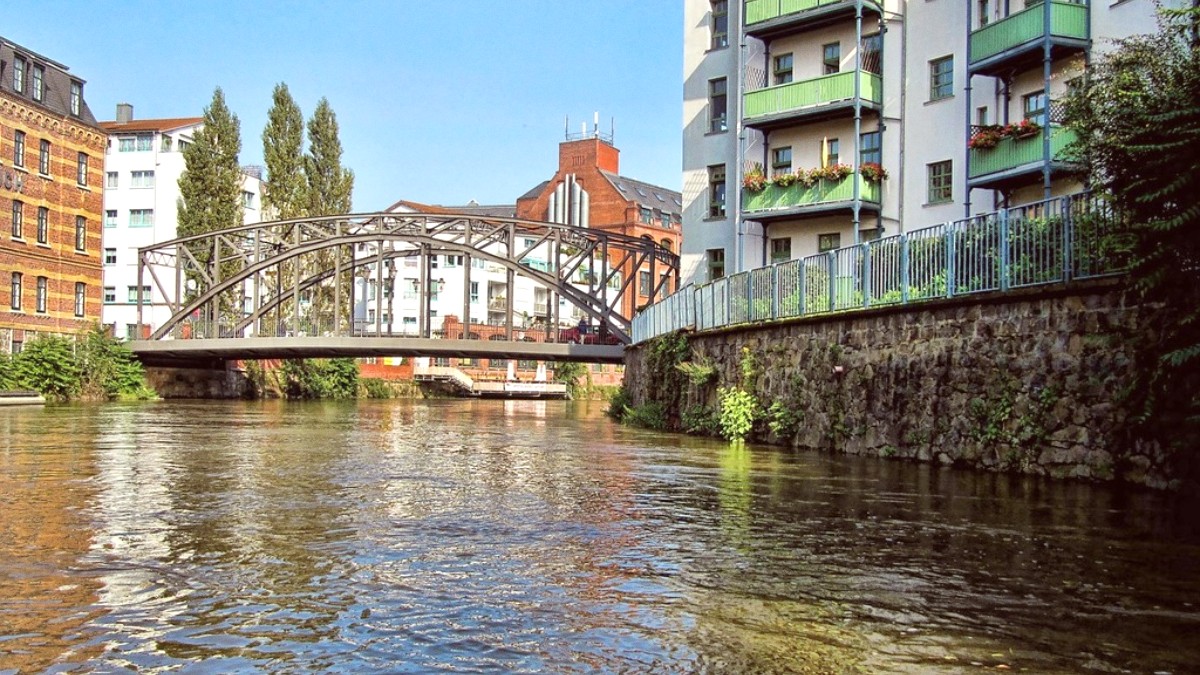
Saxony, Germany
Leipzig's cultural heritage unfolds through its historic churches, monumental structures, and modern attractions. Each site marks an unique part of the city's identity and past.
Consider GetYourGuide for convenient booking of attraction tickets and tours. It simplifies planning your sightseeing.
Check websites of individual museums and cultural institutions for special exhibits, temporary installations, or unique programming. Many venues present guided tours or workshops.
St. Thomas Church and St. Nicholas Church are prominent. The Russian Memorial Church features distinctive Russian Orthodox architecture.
The Monument to the Battle of the Nations remembers a pivotal European moment. Runde Ecke Memorial Museum, in the former Stasi headquarters, documents surveillance and life under the GDR regime.
Spinnerei, a former cotton mill, transforms for creative arts. Leipziger Neuseenland, former lignite mining areas, transforms into lakes, demonstrating landscape rehabilitation.
Leipzig delivers extensive green spaces and access to a developing lake district, creating opportunities for relaxation and outdoor activity.
Leipzig's largest and most central park, ideal for walking, cycling, and picnicking. The park features a riverside promenade and often hosts outdoor events.
A smaller, elegant park adjacent to the Leipzig Zoo. It includes a historical pub and animal enclosure, for pleasant strolls.
Leipzig University's botanical garden showcases a diverse collection of plants from around the world in themed sections and greenhouses.
The Monument to the Battle of the Nations presents panoramic views. Fockeberg, an artificial hill, creates good views of the city skyline, especially at sunset.
Leipzig Zoo serves as the main attraction for structured wildlife observation. Auenwald (Floodplain Forest) allows birdwatching and observing local wildlife.
Leipziger Neuseenland, a vast recreational area, comprises former lignite mines transformed into interconnected lakes. Cospudener See and Markkleeberger See are popular for swimming and water sports. Stadthafen Leipzig offers boat rentals and guided tours on canals. No major geological features are present directly within Leipzig.
One of Europe's most modern zoos, known for its "Gondwanaland" tropical hall and focus on species-appropriate enclosures. It houses a diverse collection of animals from around the world. Dedicate at least half a day to your visit; Gondwanaland is a must-see.
Popular for swimming, sunbathing (with sandy beaches), sailing, and cycling around its perimeter. It features a marina and a lookout tower (Bistumshöhe). Part of Leipzig's New Lakeland.
The city harbor offers boat rentals and guided tours on Leipzig's canals and rivers, creating an unique perspective of the city's green spaces and transforming industrial landscape.
Beyond the main attractions, Leipzig holds several lesser-known spots that present unique experiences and insights into local life.
Discover local favorites rarely visited by tourists, providing unique insights into Leipzig's alternative scene and creative hubs.
Plan your visits to the Spinnerei during one of its "SpinnereiGalerien Rundgang" (gallery open house) weekends. This creates a chance to visit many studios and galleries, often meeting artists directly.
A former food factory complex in Südvorstadt, now an alternative cultural space. It houses independent shops, cafes, a cinema, and hosts a weekly flea market.
The Spinnerei (former cotton mill) houses numerous galleries and workshops. The Karl-Heine-Kanal allows canoe or kayak exploration.
Leipzig presents diverse settings for photography, from panoramic cityscapes to unique architectural details and natural blends.
One of Europe's most modern zoos, known for its extensive "Gondwanaland" tropical hall and focus on species-appropriate enclosures. It houses a diverse collection of animals from around the world.
Leipzig’s history comes alive through its preserved districts, monuments, and sites recalling significant events. Its natural spaces offer respite.
Explore the city's architectural heritage, from its Old Town to the unique Gründerzeit district, each telling a story of Leipzig's past and transformation.
Leipzig offers extensive natural attractions, from central parks ideal for relaxation to a transforming lake district perfect for water sports and outdoor activities.
Leipzig's spiritual and historical depth reveals through its prominent churches and powerful memorial sites, reflecting pivotal moments in history.
These sites offer important context for understanding modern German history.
Leipzig's past as an industrial hub is visible in its transformed industrial sites, now repurposed for arts and recreation, showing urban regeneration.
These transformations highlight Leipzig's adaptable spirit.
Explore Leipzig's lesser-known but equally captivating sites, from immersive art experiences to peaceful historical retreats and alternative cultural spaces.
These spots present unique experiences beyond typical tourist routes.
Most major sites like St. Thomas Church, St. Nicholas Church, Old Town Hall, and Monument to the Battle of the Nations are open daily with seasonal variations. Entry is free for churches; museums and monuments may have fees. Check specific opening hours for each location.
For St. Thomas Church, attending a choir performance offers a profound cultural experience. For the Monument to the Battle of the Nations, climbing to the top on a clear day yields rewarding panoramic views. Dedicate at least half a day to Leipzig Zoo, especially the Gondwanaland tropical hall.
Learn about St. Nicholas Church's role in the Peaceful Revolution. Explore the City History Museum in the Old Town Hall for Leipzig's past. The Bach Museum and Mendelssohn House provide insights into the city's musical heritage.